The arrowroot has become especially popular in floriculture - a flowering plant that surprises with its decorativeness as if painted with leaf patterns. A flower was born in the West Indies and the tropics of South and Central America, and received the name in honor of the doctor and botanist B. Marant.
Exotic flower is suitable for keeping in any room due to its miniature. Growing this representative of Marantovy at home can sometimes cause difficulties for beginners, but if you follow the simple rules for caring for the arrowroot, it will delight you with bright green leaves for a year.
Content
Characteristic of arrowroot and plant species
The indoor flower is characterized by tuber-like roots and leaves in the form of an ellipse, which are located on the stems. The color of the leaves is very original and beautiful: depending on the variety, the color can vary from white to deep green. On the main color background, patterns of stripes and veins are clearly visible. The outer part of the leaf blade is brighter and more saturated in color than the inner one, which is especially evident when the plant raises and twists its leaves in the evening. For such a feature, the arrowroot is called the "prayer flower."
The arrowroot blossoms infrequently, even with careful care, and the emerging small inflorescences do not have special decorative value. Inflorescences are spike-shaped and asymmetric, have a light yellow or white color. The fruits of the plant are contained in a single-seeded box. The height of the plant is 30-40 cm, which allows it to be grown in a small room, while the arrowroot growing in the wild sometimes reaches 1 m in height.
 You may be interested in:
You may be interested in:In indoor conditions, two of them are most often grown: Three-color (Tricolor) and Two-color. These species are often confused with each other, but their difference in color is obvious, if you look at the photo carefully. There are about 25 species in the genus Maranta, but several are especially popular:
- A characteristic feature of the Tricolor species is large oval-shaped leaves that can reach 15 cm in length and 6 cm in width. The outer side of the leaves has an unusual color: around the central light pink vein there are stripes in the shape of feathers. Their color varies from light to dark green. The inner side of the leaf blade may be pink or purple. The stems reach 30 cm in height, yellow or white inflorescences may appear from their tops.
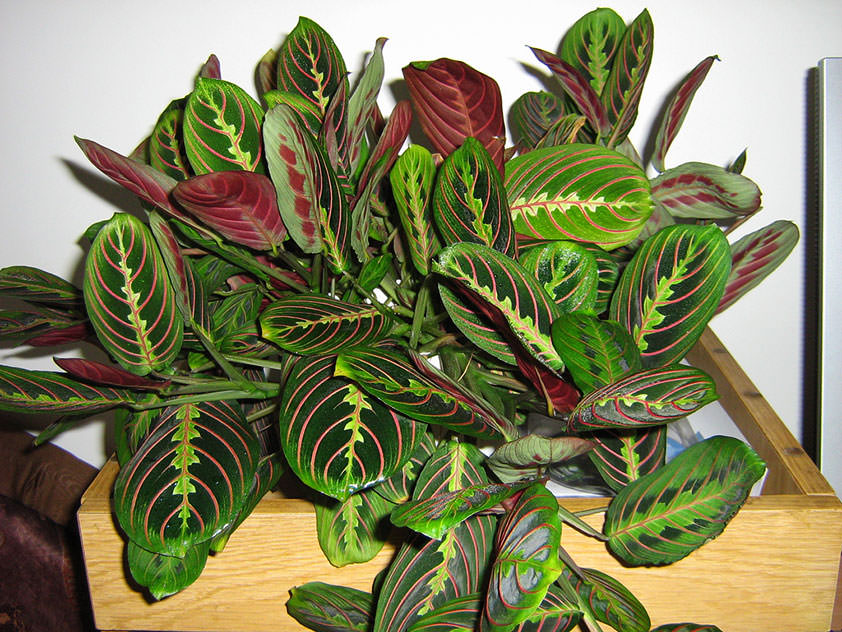
Tricolor - Two-colored arrowroot has the same parameters, but differs in leaf color, and is less common than tricolor. This species is different in that it does not form a root system. The pattern on the underside of the leaf is reddish, on the top is dark green.
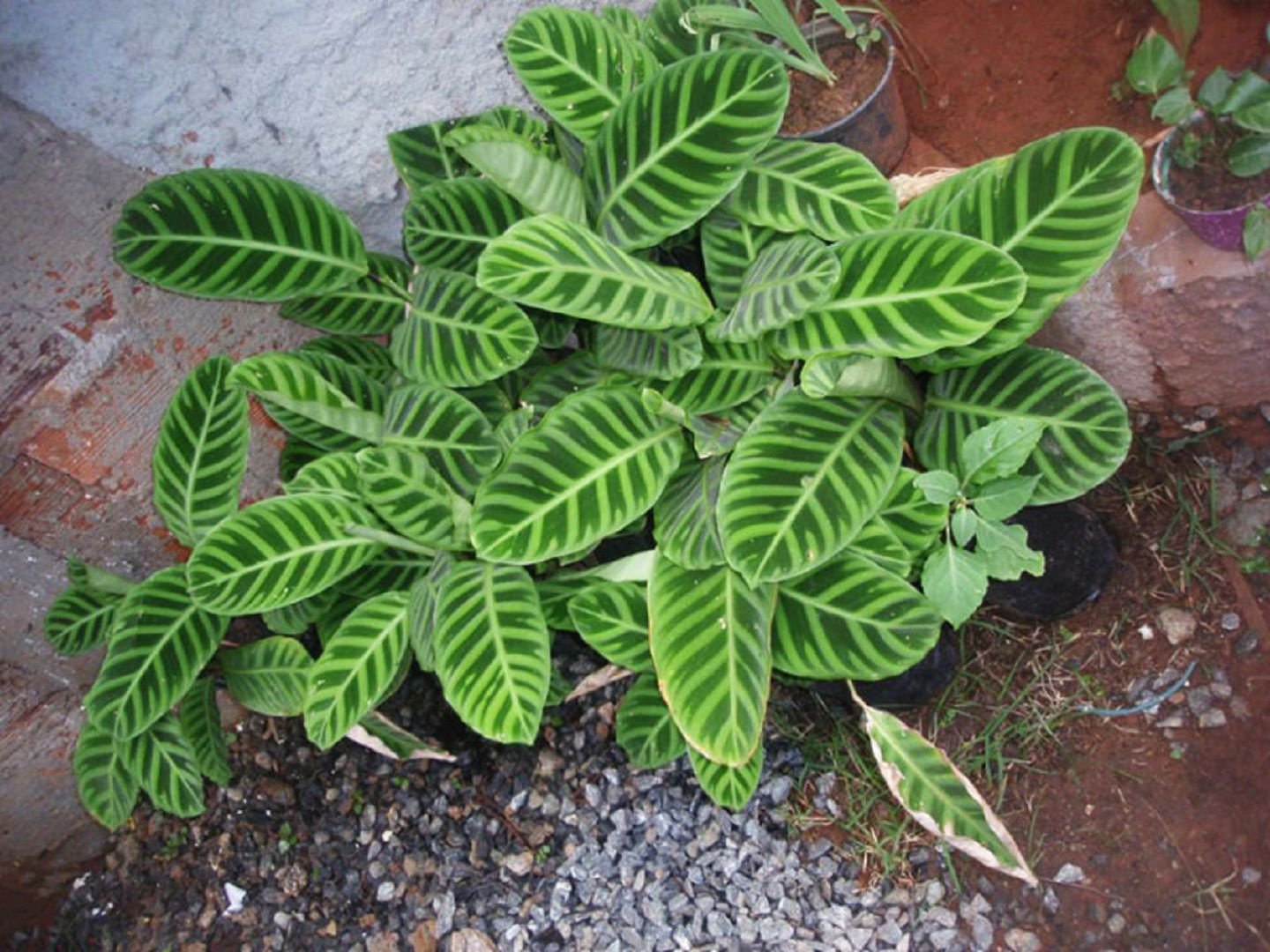
Maranta two-tone - White-winged decorative arrowroot is another popular species in floriculture, which is characterized by oval leaves with a silver stripe in the center and external saturated green edges. Standard plant height - 30 cm.This is one of the most unpretentious and beautiful views.
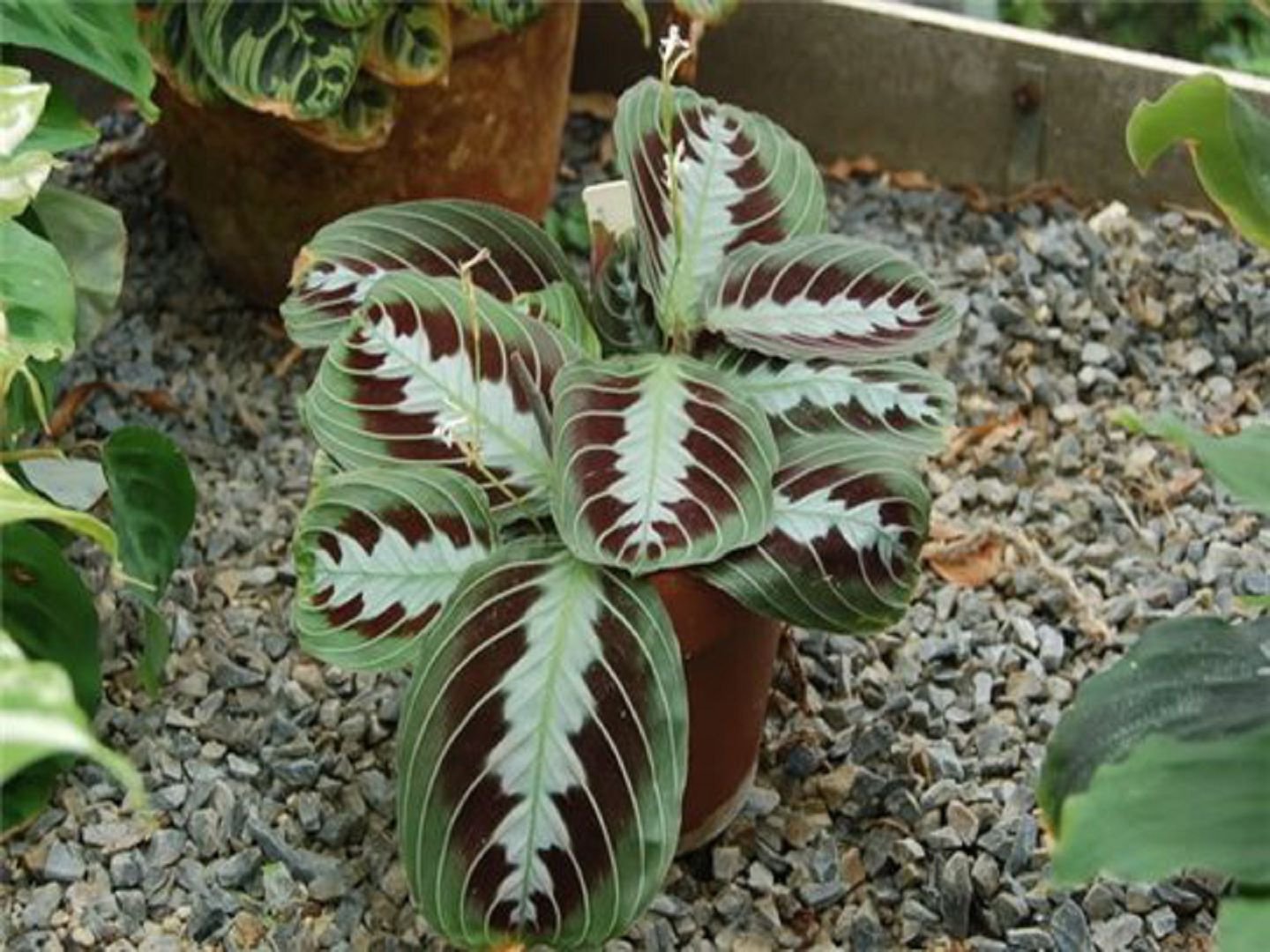
Whitewashed - Maranta Kerhoven is an unusual species, the distinguishing feature of which is saturated green leaves with very dark small spots located around the central vein. Such a plant is usually slightly lower than the species presented above and rarely stretches more than 25 cm in height.
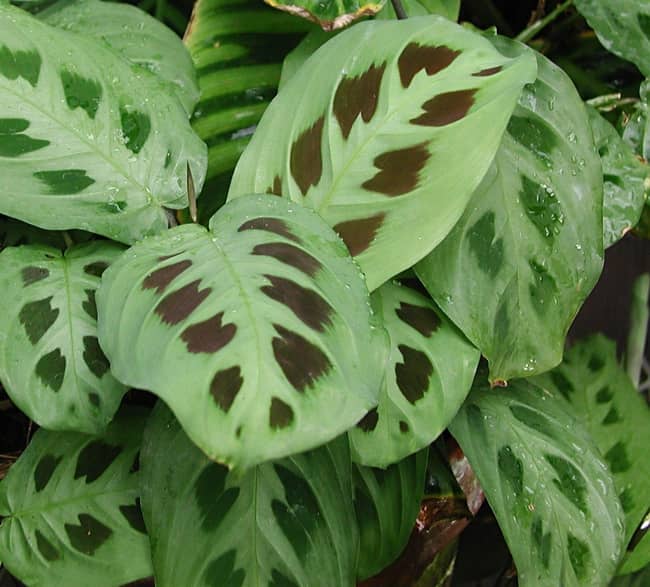
Maranta Kerhoeven - Maranta Massange (Black) - a flower that differs from all species in the darkest color of leaf blades with a thin silver stripe in the center. This variety of arrowroot is very whimsical and rarely grown at home.
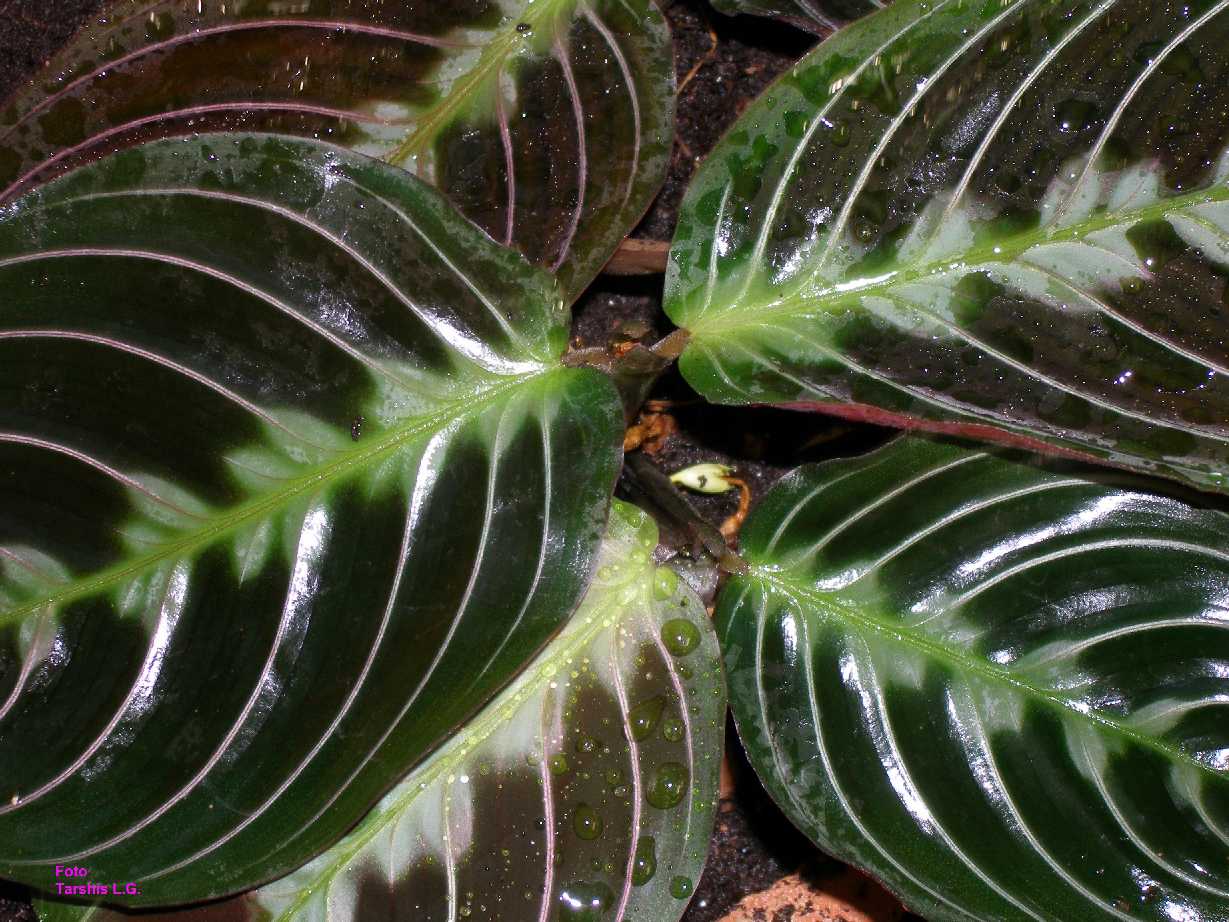
Maranta Massange
Home care for the arrowroot plant
Despite the fact that some species of arrowroot are quite whimsical, caring for species such as Two-Tone and Tricolor does not cause many problems even for beginners. The main requirement for care is the creation of conditions as close to natural as possible:
- constant high humidity;
- average air temperature;
- shaded area without direct sunlight;
- long daylight hours.
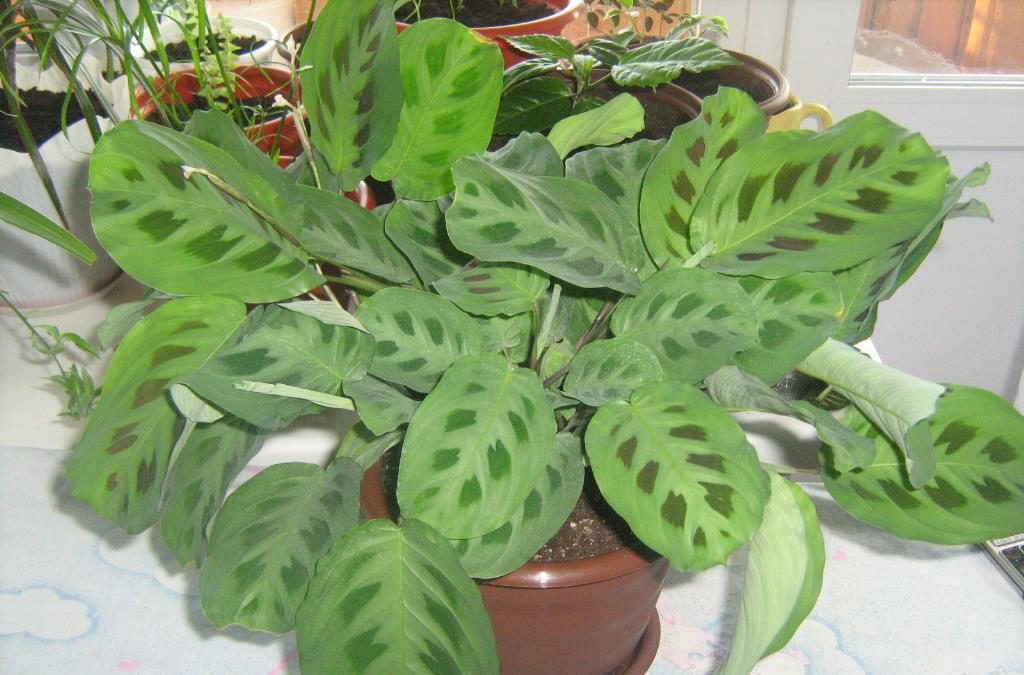
The main difficulty arising from the cultivation is the need to maintain moist soil, but at the same time to prevent stagnation of moisture in it. In order for the liquid to not stagnate in the soil, you can resort to a simple trick, which will create conditions similar to greenhouse conditions for a flower.
Before spraying the flower, place the pot in a plastic bag, tie it so that the leaves are not covered by it, and then start spraying. Then take out the pot and place it on a pallet with wet expanded clay - this will achieve almost 100% air humidity.
Preference should be given to liquid organic fertilizers, as they are easier to absorb by plants. Feeding for decorative and deciduous crops is best suited.
Some difficulties encountered when growing arrowroots and methods for solving them:
- The brown and darkened tips of the leaves are too dry air and soil, poor quality of water used for irrigation. For irrigation, you need to take filtered water at room temperature.
- Yellow or brown leaf tips - the plant lacks vitamins or, on the contrary, there are too many of them. When using nutrient soil overfeeding the plant is not necessary.
- Pale leaves are intense lighting that harms this houseplant.
Lighting
Despite the fact that the plant should be in partial shade, it will die in the prolonged absence of sunlight. It is better to put the flower pot in a place where the sunlight is diffused and not too bright: windows that face north will be the most suitable option. You can put the plant on the windowsill of a window facing east and west, but then the flower will have to be shaded.
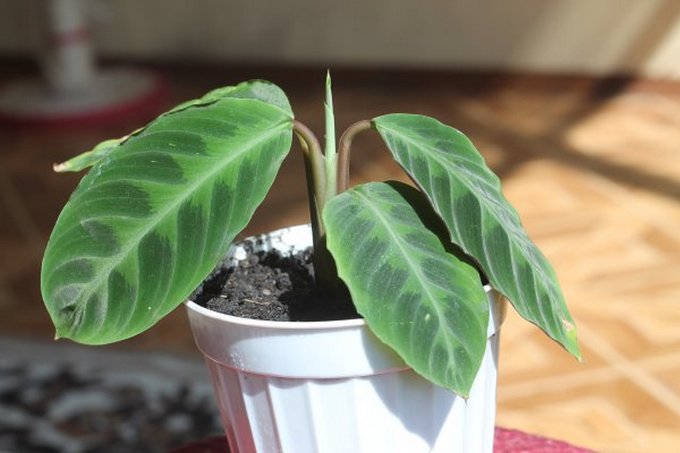
In the warm season, the arrowroot can be taken out into the fresh air: in the garden or on the balcony. You can understand that a plant suffers from an overabundance of light by leaves: if they quickly lose saturated green light and become almost white, the plant needs to be removed in the shade. If the leaves curl and the pattern on them becomes blurry, the arrowroot does not have enough light. The daylight hours are 14-16 hours. It is possible to maintain a normal daily routine for the arrowroot in winter using fluorescent lamps.
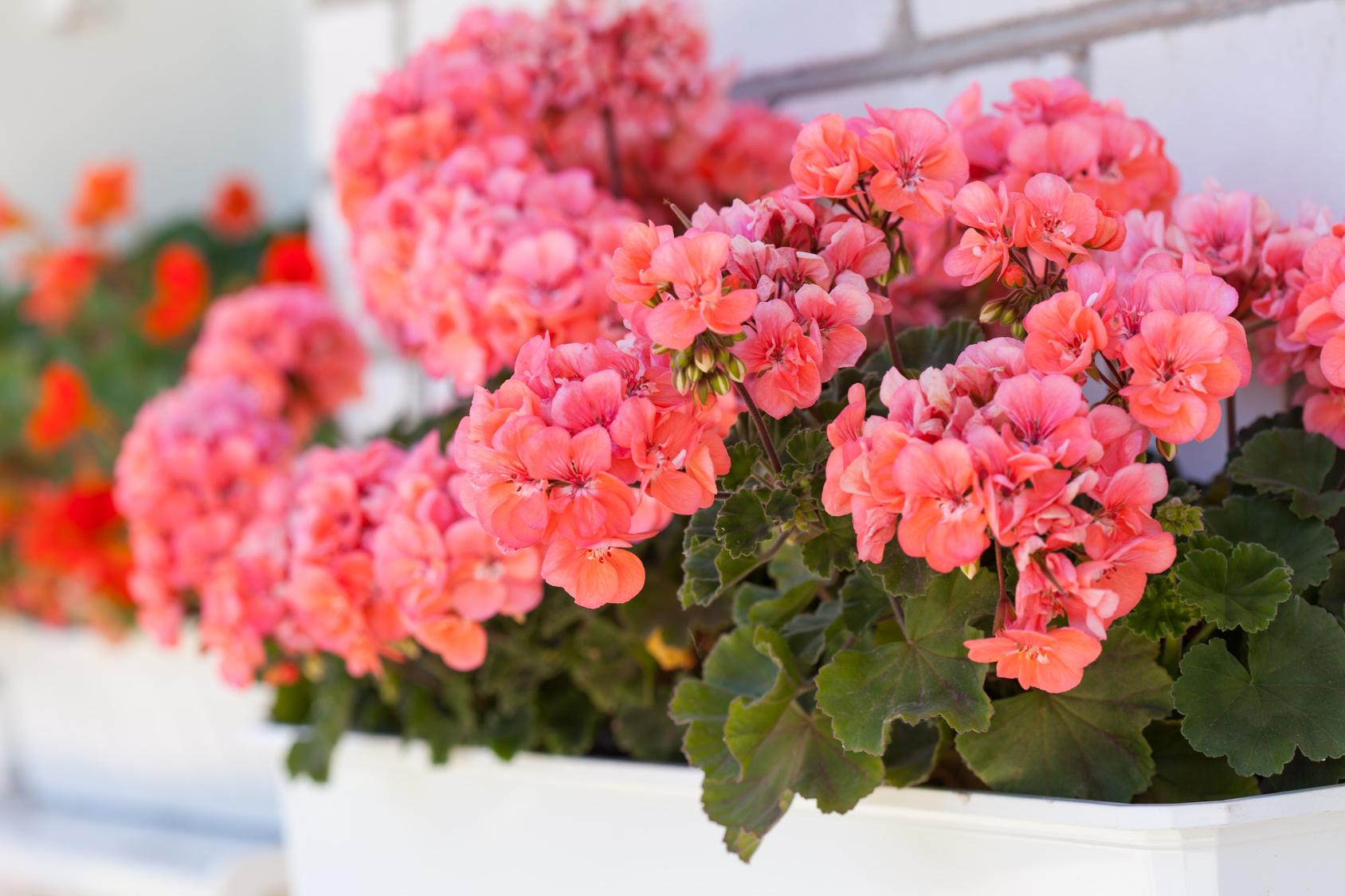 You may be interested in:
You may be interested in:Temperature and humidity
For the normal development of the flower at home, it is necessary to maintain an average temperature in the room, both in winter and in summer.Do not allow temperature differences, its too low or high indicators.
The air in the room with the arrowroot must have high humidity, which can be achieved by regularly spraying the flower from the spray bottle with filtered water. Spraying should be frequent but moderate. In summer, spray the flower at least twice. In hot weather, the arrowroot can be placed near an additional source of moisture - an aquarium or a fountain. In the summer, during the rainy season, the flower grows well outdoors in the shade.
Watering and feeding
The soil in which the flower grows must be constantly moistened. However, there should be no stagnation of water. Checking the moisture of the soil with a wooden knitting needle (the soil should dry out by 2 cm), you can water the plant every 3-4 days in the summer. In winter, watering should be reduced, moistening the soil no more than once a week. For irrigation, soft filtered water is used, which should be warm to avoid overcooling the roots.
Watering should be accompanied by top dressing. Starting in spring, mineral fertilizers should be applied to the soil in a weak concentration, diluted with 2 times more fluid than the fertilizer packaging indicated in the instructions. The frequency of top dressing is 2 times a month in spring and summer. In autumn, you can also fertilize the plant, but not more than once a month. If the arrowroot has dropped its leaves, there are too many fertilizers in the soil.
Flowering Care
At home, the arrowroot rarely blooms, and the flowering time is very short. During this short period, the plant is greatly depleted, so many experienced flower growers cut flower stalks immediately after their appearance. If you want to leave the flower, you need to take care of it, following the standard rules: a place in the shade, high humidity and regular watering. Fertilizing the soil is optional, especially if the soil is already nutritious.
Diseases and Pests
Plants that are kept in unsuitable conditions are susceptible to diseases and pests. Maranta is susceptible to attack by the following insects and diseases:
- Spider mite. Appears if the air in the room is very dry and the temperature is high. To get rid of the insect, you need to increase the air humidity to normal levels and do not forget to water the flower. It is better to transplant the infected plant into a new soil and treat it with acaricides and insectoacaricides.
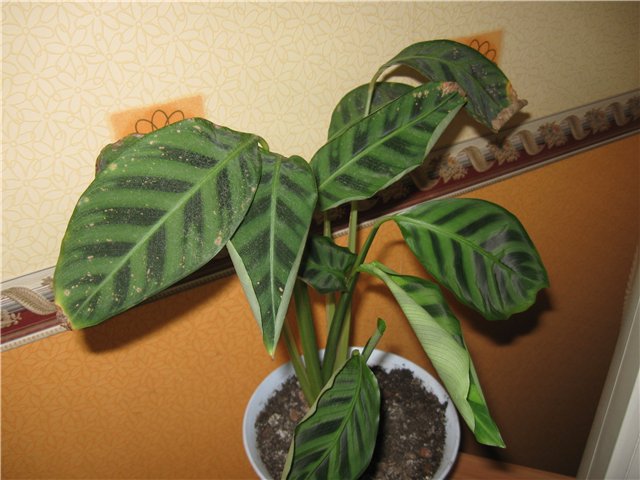
Spider mite on the arrowroot - Mealybug. Insects can be removed by washing the plant with soap and water, and then treating them with insecticides three times, with an interval of 10 days. Prevention of the appearance of a worm is the maintenance of normal soil moisture, the absence of draft and planting in sterile soil.
- Chlorosis. The plant becomes ill due to a lack of iron, due to which the leaves and shoots dry and fall off. You can avoid the disease by periodic irrigation with acidified water (dissolve several grains of citric acid).
Propagation and transplantation of the arrowroot flower
The arrowroot can be propagated in two ways: by cuttings and by dividing the bush. Propagate the plant in both ways in the spring:
- When propagating by cuttings, you need to make sure that each shoot has 1-2 leaves, and the length of the cuttings is at least 10 cm. Cut off cuttings must be put into water, after 10-14 days they will take root. While the cuttings will stand in water, they also need to be regularly sprayed and kept in a warm room. Covering them with film is not necessary.
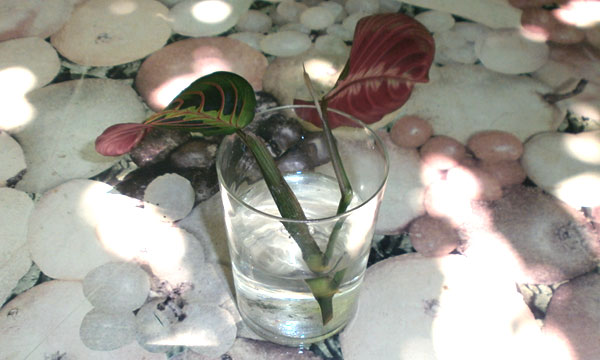
Cuttings Cuttings need to be rooted in nutrient soil and water.While they will develop in new soil, it is impossible to expose them to the sun: they need a shaded place. When the cuttings grow, they can be planted in separate pots and continue to care, as for adult plants.
- Dividing the bush is a more gentle way. Before dividing, you need to make sure that both parts that need to be divided have a root system and a growth point. After you need to get the plant out of the ground, and use sharp scissors to divide the bush into 2 equal parts. Cutting places at the roots must be treated with crushed coal to prevent their decay.
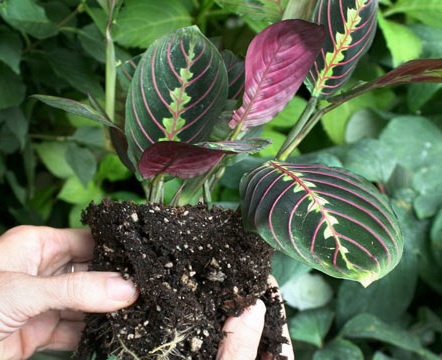
Reproduction of arrowroot by dividing the bush The separated parts need to be planted in separate pots with nutritious soil for arrowroot and pour with warm water. The pot needs to be covered with a plastic bag and do not remove it until young leaves grow. Subsequent plant care is standard.
Before transplanting, you need to cut off diseased and old leaves and stems to stimulate the growth of new shoots. A new flower pot should be larger and wider than the previous one by a couple of centimeters and have drainage holes. The soil for a houseplant can be purchased at a store or made on its own by mixing the following components in a 2: 1: 2: 1 ratio:
- turf land;
- humus;
- peat;
- wood ash.
Sphagnum moss, which is a kind of antiseptic for the earth and helps to retain moisture in it, can also be added to the soil. The soil should not contain lime - it can destroy the flower. The soil should be light, loose and easily breathable. All ingredients must be mixed until smooth in a separate container.

The plant must be removed from the old pot with soil, after which it must be completely cleaned from the root system. At the bottom of a new pot, pour drainage (2-3 cm) and a little crushed polystyrene. After you need to pour the soil into the pot, lightly tamping it with your hand. When about 4-5 cm of free space remains to the top of the pot, set a flower in the soil and sprinkle the roots with the remaining soil. Pour the plant with water at room temperature with vitamins dissolved in it.
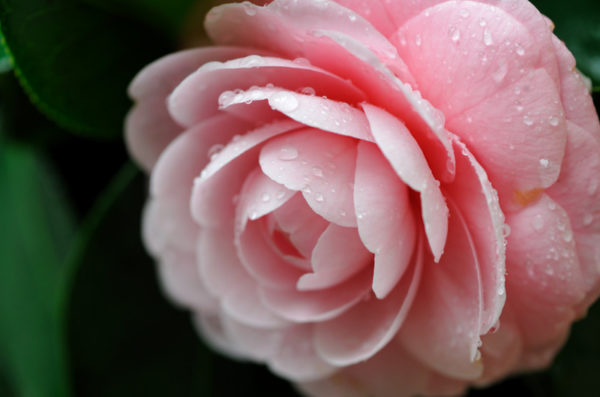 You may be interested in:
You may be interested in:Signs and superstitions about a houseplant
Maranta is not only a wonderful decoration of any home, but also a real talisman that attracts well-being and happiness. According to signs, the plant contributes to the financial well-being of its owners, so the study or workplace will be the best place to place it. It is believed that if buds appear on the plant, the owner will soon receive a large sum of money. The buds on the plant can also indicate that a child will soon be born in the family. Since the arrowroot is rarely covered with flowers, such signs are often considered fair.
The flower is often placed in living rooms: the arrowroot acts as the keeper of the hearth, helps to avoid conflicts in the family and strengthen the relationship of spouses. It will be useful to put a flower in the room to the child, who often has problems with sleep and study. The flower, placed in the nursery, normalizes sleep patterns, promotes concentration and improves the psychological situation.
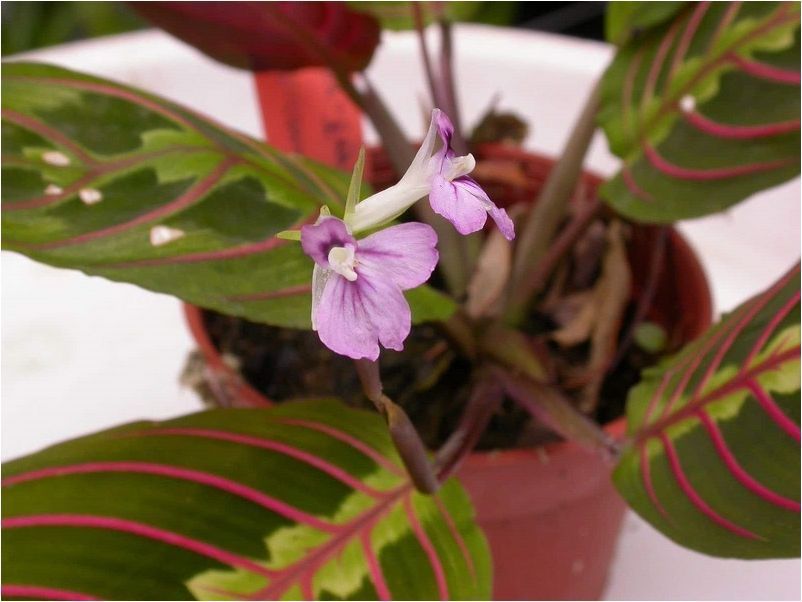
In such cases, the flower is best placed at the head of the bed. Most will accept a positive attitude about the arrowhead, but there is one negative superstition - the death of a flower may mean that misfortune will soon happen in the family.However, given the fact that the flower is unpretentious and its care is quite simple, the plant does not die with good care.
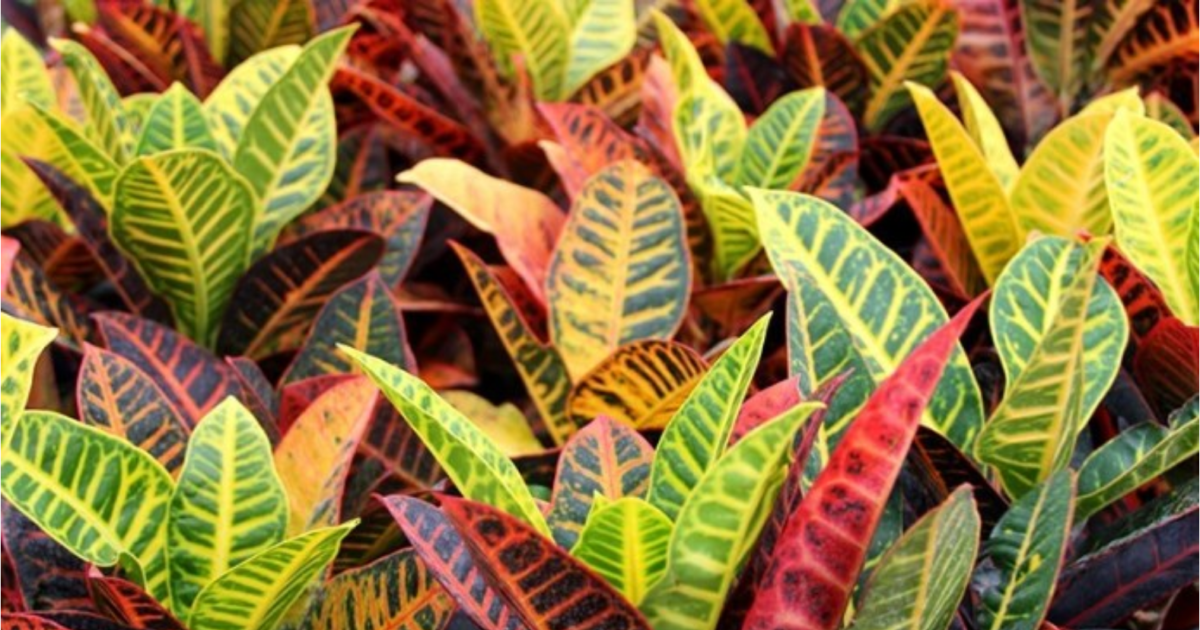 You may be interested in:
You may be interested in:Common flower growing questions
Caring for the arrowroot is quite simple: it is resistant to disease and easily tolerates a lack of light. Subject to the main rule - maintaining moist air and soil - the flower will be healthy and strong. If you have one developed arrowroot in the home greenhouse, you can get a few more young flowers, using simple tips on plant propagation.

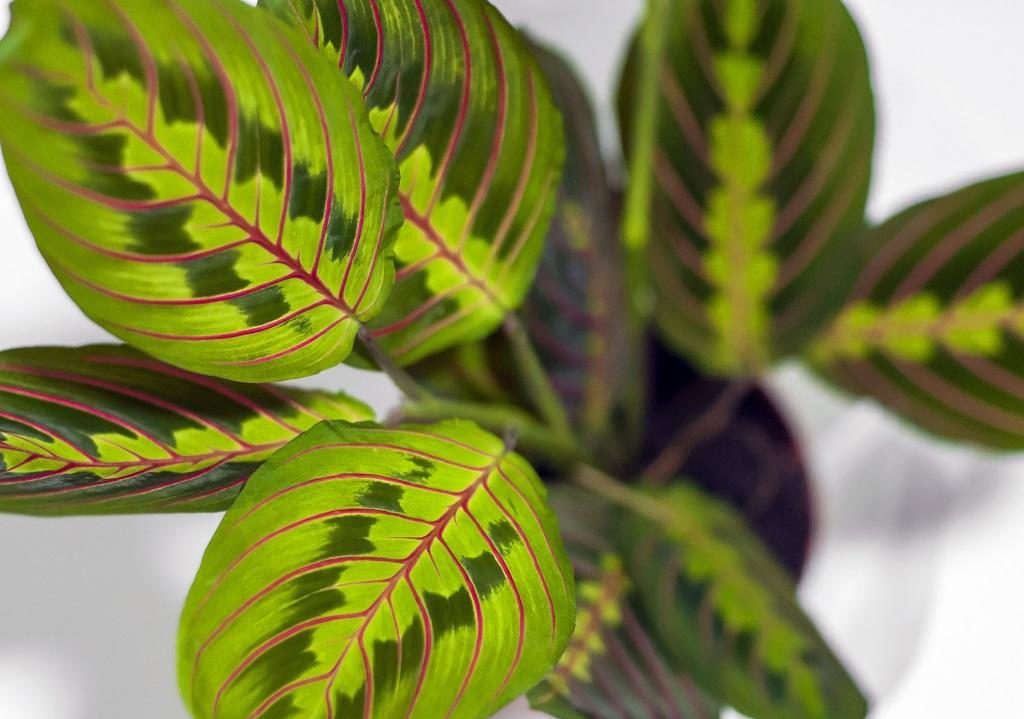
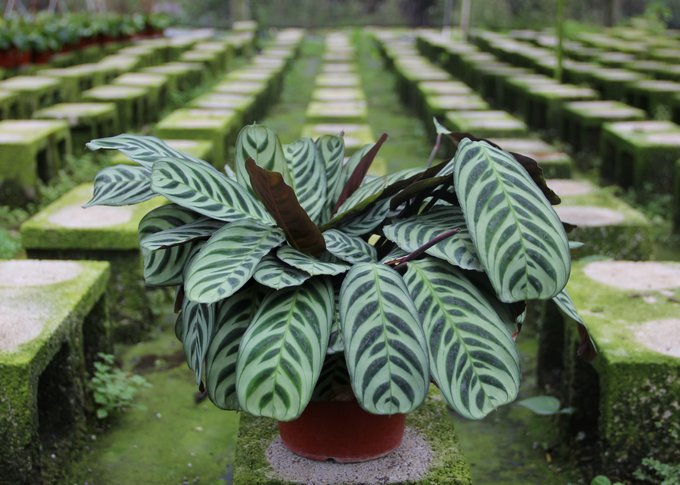
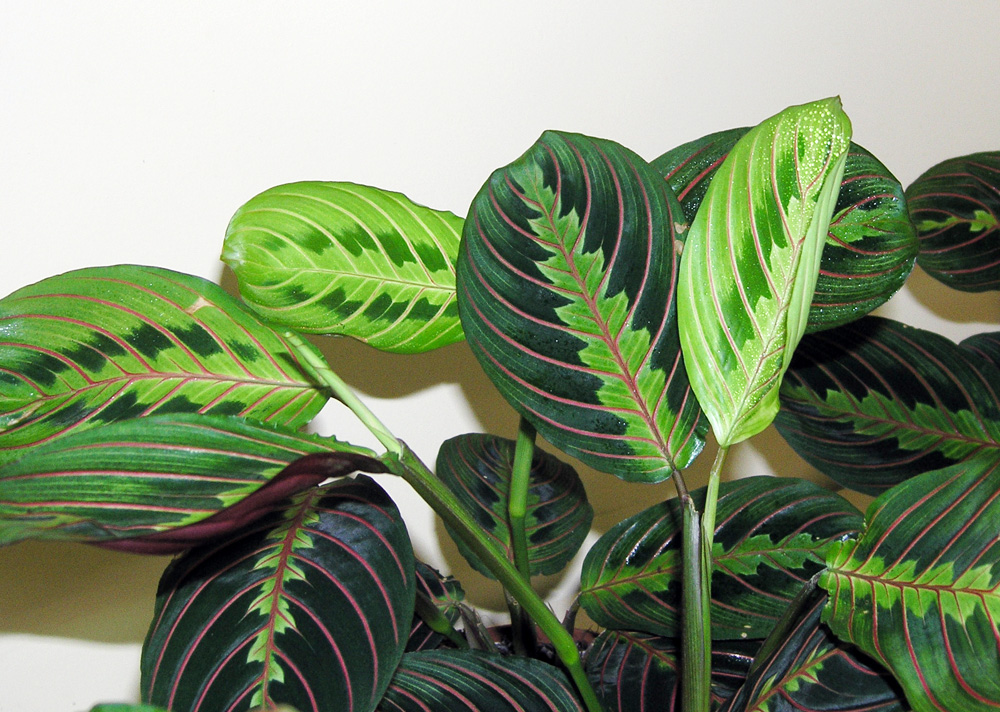



 10 beautiful annuals that bloom all summer
10 beautiful annuals that bloom all summer Sow in the ground, without seedlings: 10 beautiful and unpretentious flowers
Sow in the ground, without seedlings: 10 beautiful and unpretentious flowers Platicodon planting and outdoor care
Platicodon planting and outdoor care Hosta - planting and care in the open ground in the Urals
Hosta - planting and care in the open ground in the Urals